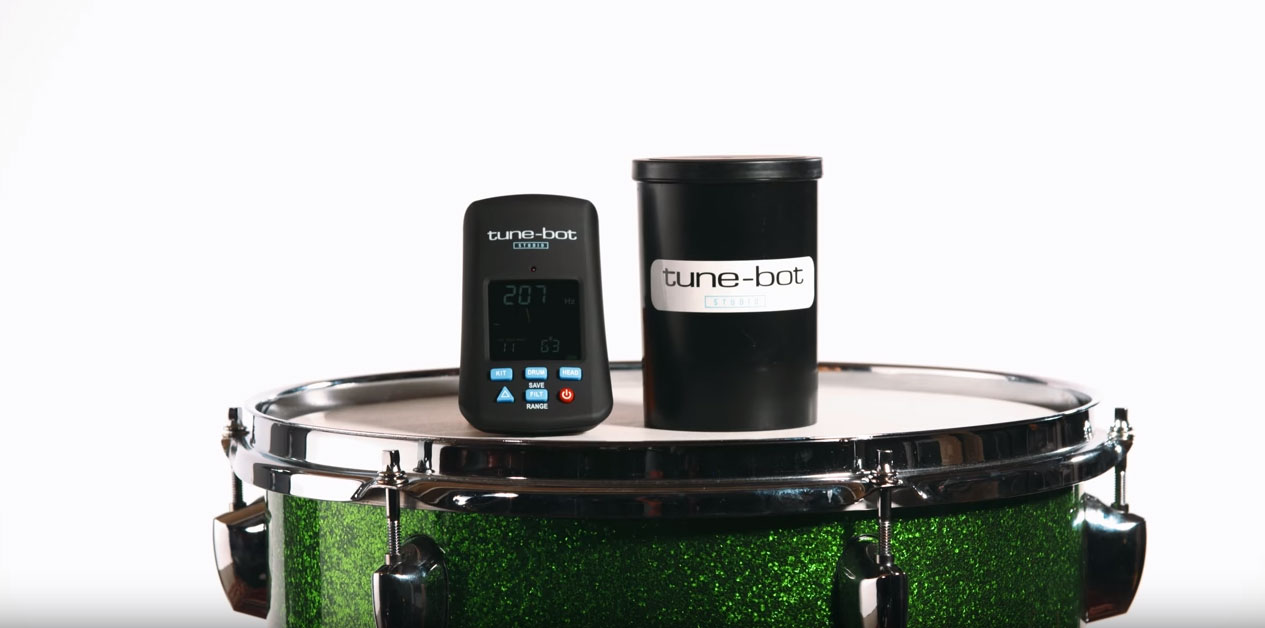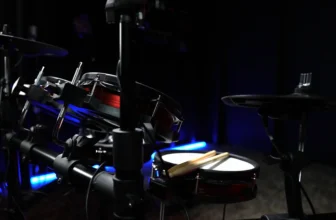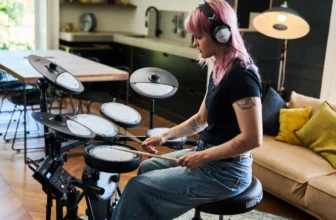Tune-Bot Review: Is it Worth it for Drum Tuning?


Let’s face it. Not everyone excels at tuning drums. I’d be willing to bet that many drummers never tune their drums either. Recording engineers often have to learn how to tune because the drummer recording cannot.
Tuning drums is a technical task that’s often monotonous. Why not let technology solve the problem? We’ve all seen countless YouTube videos claiming ‘secret methods’ to tuning, but numbers don’t lie.
Overtone Labs have created a product called Tune-Bot that aids in the process of tuning. Similar to that of Drum Dial, Tune-Bot measures the fundamental pitch or frequency at each lug point allowing the user to adjust tension as needed.
This means you’ll get a visual representation if each tension rod is at equal tension.
Tune-Bot can also give a pitch reading of the overall fundamental frequency of a drum by striking the center of the head. This is particularly useful for tuning tom drums to specific intervals.
I’ve always tuned by ear, so having a visual representation of what I’m hearing is fantastic. I no longer have to question whether one tension rod is higher or lower than the next.
Digital tuners are better
Tune-Bot is digital, unlike Drum Dial. While Drum Dial does sell a digital version, the original mechanical tuner design isn’t able to measure to a significant level of accuracy from my experience.
There are too many variables that can cause the reading to be inaccurate.
Look and design
The Tune-Bot strikes a familiar resemblance to that of a Snark clip-on guitar tuner. It dons a large, backlit LCD screen that indicates the frequency, six rubber buttons to switch functions, and a well-made clip for fastening to your drum’s rim.
In use
Making adjustments to tension isn’t much different when using Tune-bot. You should always be sure to work around the drum in a star pattern, by the way.
With the Tune-Bot attached, tap the head about an inch away from the tension rod. The display will give a reading in Hz, though you can also press the ‘Note’ button if you choose to tune to a specific musical pitch.
Ultimately, you’ll want to do your best to match all of the pitches at each lug point, which will result in a drum that is in tune with itself.
The display makes it very simple to see how far above or below you are from another lug. Using the ‘Difference Mode,’ you can compare between two lugs and see a visual representation of each, similar to how a guitar tuner functions with +/- in Hz.
The ‘Filter Mode’ is excellent for troublesome drums that have a broader frequency range. Some high-tom drums may possess other frequencies that may confuse Tune-Bot. The filter helps focus on the pitch of the lug you’re working on.
Saving your settings
Say you’ve set very odd or random tuning intervals (one-lug totally loose and the rest very tight, for example) that somehow manage to sound great.
With Tune-Bot, you can save your settings for when you need to retune. You can keep both the batter head and resonant head frequencies saved in the device.
Artist presets
Overtone Labs also features tuning ‘presets’ from tons of famous players such as Dennis Chambers, Mark Schulman, Ray Luzier, Rich Redmond, Jason Bittner, John Riley, Jost Nickel, and many others.
The device takes all the technicality out of tuning. The included manual holds your hand and walks you through the process if you’ve never tuned a drum before. Tune-Bot makes it easy to get creative with unique tunings that can be recalled at a later date.
The company’s website also supplies you with a plethora of tuning guides and calculators for achieving your ideal sound.
There are three variations of Tune-Bot from Overtone Labs: the original, the Gig, and the Studio, but it seems like Overtone Labs is currently only focused on selling the Studio at this point. The Studio includes the most features but is also the most costly of the lot.
Conclusion
I’m not entirely sure what Tune-Bot could improve upon; it’s a reliable product. I think the price is a little steep, but it works really well.
The device won’t be for everyone, as many drummers are still purists when it comes to tuning. Many will trust their ears far more than any piece of technology with a screen.
For those who hate tuning or who are inept, Tune-Bot is the perfect solution. I tend to be more on the ‘tune with your ears’ side, but I still love the product. I found it so quick and straightforward to use and pleasantly surprised, as I was very skeptical before using it.
Tune-Bot is a valuable tool, not just for drummers, but recording engineers as well. I can’t imagine a studio not having some sort of drum tuner in 2020. Why take the risk of tracking a drummer who can’t tune a drum but can tuna fish?





